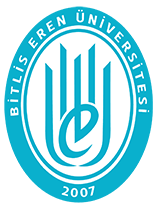| dc.description.abstract | Schools are essential social infrastructures where children spend a significant part of their time and require close attention to ensure a safe and healthy environment. In this study, 222Rn concentration measurements and annual effective dose calculations were conducted in 20 schools in Tatvan district of Bitlis province using LR-115 (Type-2) nuclear track detectors. Measurements were conducted over two periods: spring (March, April, May) and autumn (September, October, November). Indoor radon concentrations ranged from 23.39 to 222.06 Bq/m³ in spring and 42.68 to 308.38 Bq/m³ in autumn, with arithmetic means of 83.68 Bq/m³ and 126.49 Bq/m³, respectively. In addition, the effect of floor level on indoor radon concentration was investigated. A clear floor-level variation was observed, with ground-floor rooms (mean: 120.77 Bq/m³) showing higher radon levels than upper-floor rooms (mean: 89.40 Bq/m³). Moreover, the annual effective dose due to radon exposure for teachers and students in the schools were estimated to range from 0.19 and 1.51 mSv/y. Annual effective dose measurements showed that although most schools fall within acceptable radiological ranges, two schools (S1 and S5) recorded annual effective doses slightly above the 1.15 mSv/y global average reported by UNSCEAR (2000). These findings highlight the need for continued monitoring and preventive measures to ensure radiological safety in educational environments. | tr_TR |














